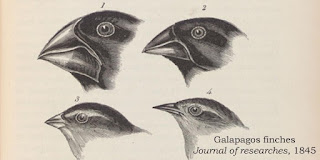I have always been interested in perception and how easily
it can be changed. The classical example of the ambiguous picture of a duck or
rabbit is evidence of the volatility of perception. If you were told it was a
rabbit, you would naturally see the rabbit first. Similarly, if you were told
it was a duck, you would see a duck.
Thus, Aldous Huxley’s “The Door of Perception”, in which he
details his experience taking a psychedelic substance, piqued my interest. It
reminded me of shows like “Alice in Wonderland” or “The Wizard of Oz” where the
main characters experienced an entirely different world only to discover that
it was all but a figment of their own imagination.
 |
| Optical illusion in which the drawing can be either a duck or a rabbit |
 |
| Disney's adaptation of Lewis Carroll's classic tale |
Having watch these films when I was in pre-school, it made
me question if my life was part of a story book and I would wake up in a
different world once the story was over. It made me question my senses and if
what I was living through was indeed reality. Perception is also the basis
behind most jokes, which work by setting up expectations and then deviating
from said expectations. Ergo, it is easy to see why perception is so intriguing
given its implications on the human psyche. More importantly, the recent
election and subsequent on-going fiasco with the current President of the
United States, highlights the importance of perception.
The next work of art that caught my attention was “Cajal’s
Butterflies of the Soul” in which Javier DeFelipe drew detailed pictures of
cells in the brain accompanied by informative text. If anything, this book is
quintessentially proof of the main message of this course, in which the fields
of science and art are intertwined. More importantly, it reminded me of Darwin
and biologists of his time. Prior to the advent of cameras, field work for
biologist involved drawing their subjects by hand. These drawings easily rival
with art found hanging in art galleries, testimony to the central message of
this course.
 |
| Drawings by Darwin in his famous paper |
Sources:
"Darwin Manuscripts Project." AMNH. N.p., n.d.
Web. 13 May 2017.
<http://www.amnh.org/our-research/darwin-manuscripts-project/>.
"About Dr. Heffter." Heffter. N.p., n.d. Web. 13
May 2017. <http://heffter.org/about-dr-heffter/>.
"Exquisite Data: a Review of Cajal’s Butterflies of the
Soul." The Beautiful Brain. N.p., 28 June 2010. Web. 13 May 2017.
<http://thebeautifulbrain.com/2010/02/exquisite-data-a-review-of-cajals-butterflies-of-the-soul/>.
Farand, Chloe. "Duck or rabbit? The 100-year-old
optical illusion that could tell you how creative you are." The
Independent. Independent Digital News and Media, 14 Feb. 2016. Web. 13 May
2017.
<http://www.independent.co.uk/news/science/duck-or-rabbit-the-100-year-old-optical-illusion-that-tells-you-how-creative-you-are-a6873106.html>.
"The Doors of Perception." Wikipedia. Wikimedia
Foundation, 12 May 2017. Web. 13 May 2017.
<https://en.wikipedia.org/wiki/The_Doors_of_Perception>.
I really like your idea of how human perceptions can be changed. In the first image of your post, there are two perspectives of viewing that an individual can take. Moreover, in everyday situations that contain ambiguous information, people can also take away totally different messages from the same scenario. Therefore, it seems essential to figure out how exactly these different interpretations arise and their consequences. However, once we do know about factors that can influence perception and their mechanisms, mind control might become possible and the moral issues that would arise with that should be carefully considered.
ReplyDelete